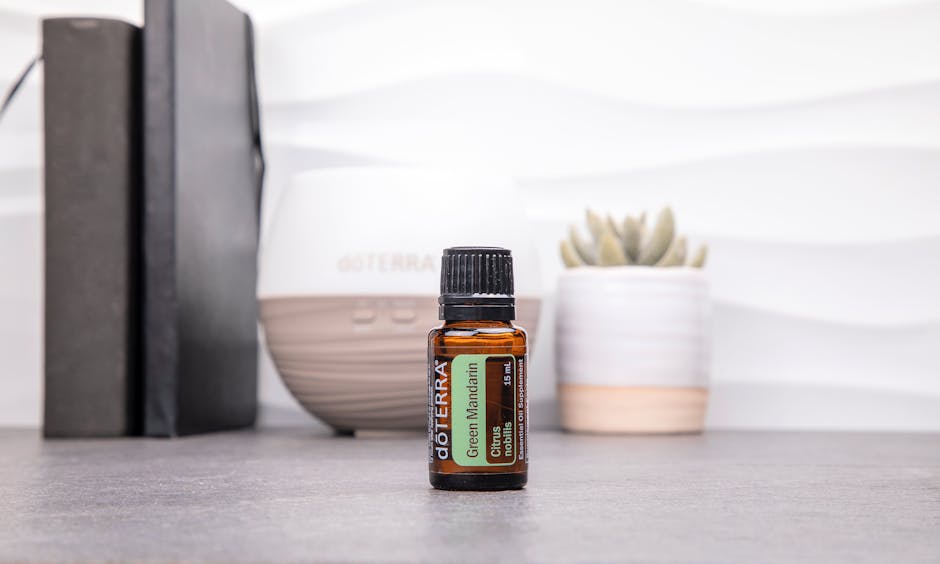Essential Oils: A Comprehensive Guide to Their Uses and Benefits
Essential oils have been a cornerstone of natural remedies and wellness practices for centuries. Extracted from plants, these concentrated oils capture the essence of their source, offering a wide array of benefits ranging from therapeutic properties to practical household uses. Whether it's soothing lavender oil, invigorating peppermint, or antibacterial tea tree oil, essential oils have found their way into health regimens, skincare routines, and even cleaning solutions.

Their versatility and effectiveness make them a valuable tool for many seeking natural alternatives in their daily lives.
What Are Essential Oils and How Are They Made?
Essential oils are volatile aromatic compounds derived from various parts of plants, including leaves, stems, flowers, bark, and roots. The extraction process is meticulous to ensure that the oil retains its purity and potency. Common methods include steam distillation, cold pressing, and solvent extraction.
Steam distillation is one of the oldest and most widely used techniques. It involves passing steam through plant material, causing the essential oil to vaporize. The vapors are then condensed back into liquid form and separated from the water. Cold pressing, typically used for citrus oils like orange or lemon, extracts oils by mechanically pressing the plant material to release its essence. Solvent extraction is reserved for delicate flowers like jasmine that might lose their fragrance under heat.
Each method has its advantages and challenges, but the goal remains the same: to create an undiluted product rich in active compounds. These compounds are responsible for the therapeutic properties that make essential oils so sought after.
The Benefits of Essential Oils
The potential advantages of essential oils span multiple areas of health and well-being. Their appeal lies in their versatility and natural origins. Here are some key benefits:
- Aromatherapy: Many people use essential oils in aromatherapy to promote relaxation, reduce stress, or boost energy levels. For example, lavender is renowned for its calming effects.
- Skin Care: Oils like tea tree and chamomile are frequently used in skincare for their antimicrobial and anti-inflammatory properties.
- Pain Relief: Peppermint oil is commonly applied topically for headaches or muscle pain due to its cooling effect.
- Immune Support: Eucalyptus and oregano oils have antimicrobial properties that may help ward off colds or other minor illnesses.
- Household Cleaning: Lemon and tea tree oils are effective natural alternatives to chemical-based cleaning products.
The effectiveness of essential oils can vary based on individual responses and quality of the product used. It's essential to choose high-quality, pure essential oils from reputable sources to maximize their benefits.
How to Use Essential Oils Safely
While essential oils offer numerous advantages, their potency demands responsible usage. Improper application can lead to adverse reactions such as skin irritation or respiratory issues. Here are some safety tips:
Dilution: Essential oils should rarely be applied directly to the skin. Diluting them with carrier oils like coconut or jojoba helps prevent irritation while maintaining effectiveness.
Avoiding Internal Use: Unless under the guidance of a qualified professional, ingesting essential oils can be dangerous. Not all essential oils are safe for internal use.
Sensitivity Testing: Before using a new oil, perform a patch test on a small area of your skin to check for allergic reactions.
Proper Storage: Store your essential oils in dark glass bottles away from direct sunlight to maintain their potency over time.
The safe usage of these powerful substances ensures that you can enjoy their benefits without unintended side effects.
A Comparison of Popular Essential Oils
The variety of essential oils available can feel overwhelming at first glance. Below is a simple table comparing some popular options along with their primary uses:
| Essential Oil | Primary Benefits | Common Uses |
|---|---|---|
| Lavender | Relaxation and stress relief | Aromatherapy, sleep aid |
| Peppermint | Energizing and pain relief | Migraine relief, muscle rubs |
| Eucalyptus | Respiratory support | Cough relief, steam inhalation |
| Lemon | Cleansing and uplifting mood | Natural cleaner, air freshener |
| Tea Tree | Antimicrobial properties | Acne treatment, wound care |
This comparison highlights how different essential oils cater to varied needs depending on their unique properties.
The Importance of Quality When Choosing Essential Oils
The market is flooded with options when it comes to essential oils; Not all products are created equal. Low-quality or adulterated oils can compromise both safety and effectiveness. To ensure you're getting the best product possible:
Check Purity: Look for labels indicating 100% pure essential oil without additives or synthetic fragrances.
Source Transparency: Reputable brands often provide details about where their plants are grown and how the oils are extracted.
Avoid Bargain Prices: High-quality essential oils require significant resources for production. Extremely low prices can indicate dilution or poor sourcing practices.
Healthline.com, among other trusted sources, recommends researching brands thoroughly before making a purchase to ensure safety and efficacy.
The Takeaway: Embracing Natural Wellness with Knowledge
The use of essential oils offers an exciting avenue for exploring natural remedies across various facets of life, be it health management, skincare enhancement, or creating a more sustainable household routine. Their long-standing history paired with modern research underscores their versatility and relevance today. Yet
If you're intrigued by this subject, consider diving deeper into specific applications or seeking guidance from certified aromatherapists who can provide tailored advice. Essential oils aren't just about immediate benefits, they're part of an ongoing exploration into holistic wellness that continues to captivate people worldwide.
